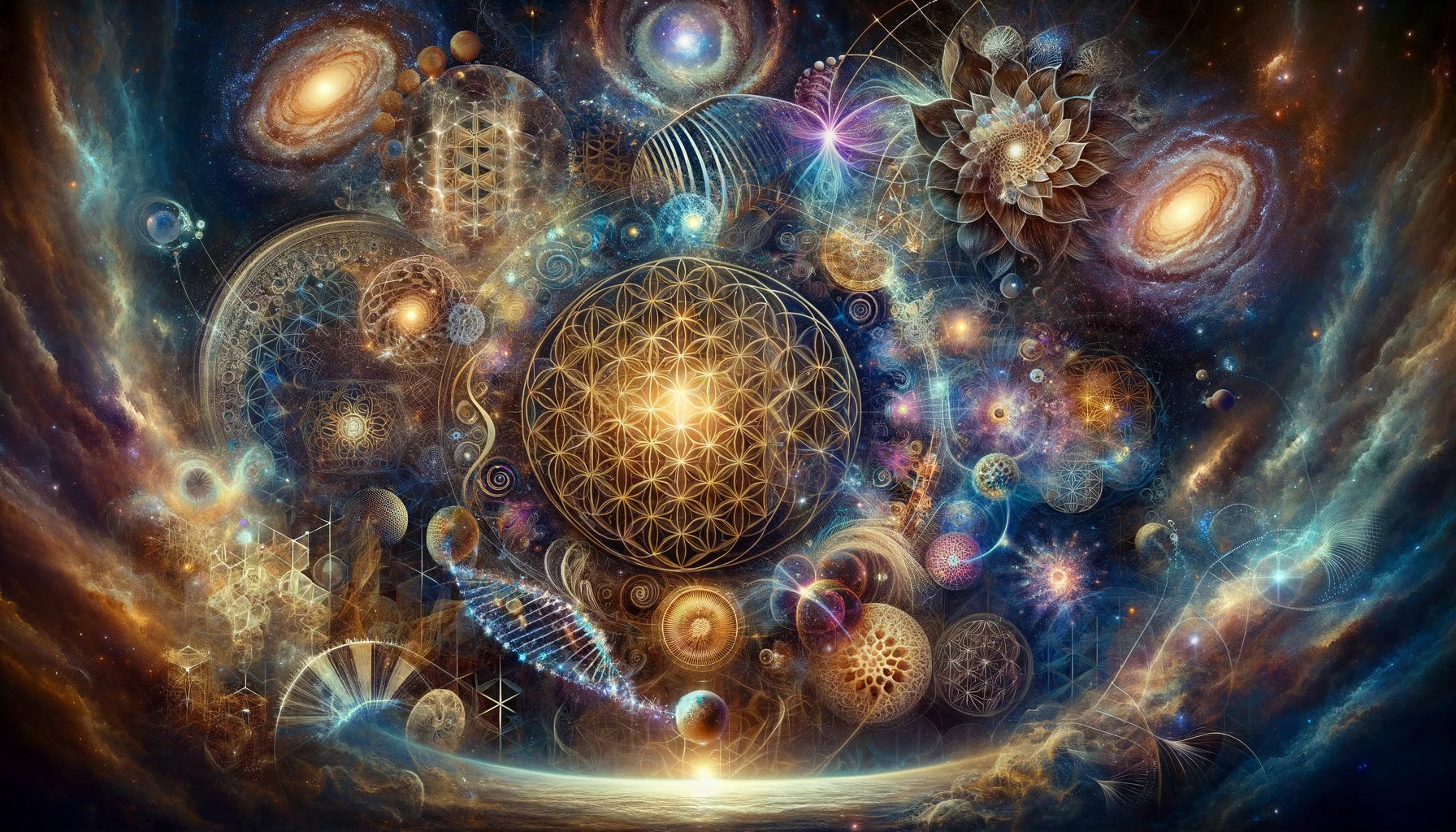Sacred Geometry is an ancient science that explores the geometric patterns underlying our physical world. From the pyramids of Egypt to the intricate patterns within a snowflake, these patterns appear in nature, art, architecture, and beyond. This blog post delves into the mysterious and captivating world of sacred geometry and its symbolism, revealing how these patterns connect us to the cosmos and to each other.
What is Sacred Geometry?
Sacred geometry is the study of geometric forms and their metaphysical meanings. The practice asserts that geometry is foundational to the creation and existence of everything in the universe. By studying these forms, one can uncover the subtle messages and understandings hidden in natural patterns.
The concept extends beyond mere measurement. Instead, sacred geometry involves the belief that through the repetition of these geometric patterns, one can tap into the spiritual dimensions that interlace the tangible world. From the structure of our DNA to the layout of the universe, these patterns are omnipresent and influential.
Historical Roots and Universal Patterns
The study of sacred geometry dates back to ancient civilizations, including the Egyptians and Greeks, who recognized that certain geometric laws shape the natural world. These patterns were revered not only for their aesthetic beauty but also for their spiritual significance.
For instance, the Golden Ratio, known also as Phi (1.618), is a well-documented example that appears in Egyptian pyramids, ancient Greek architecture, and even in the proportions of the human body. This ratio, and others like it, was believed to imbue structures with harmony and beauty that echoed the perfection of the divine.
Key Symbols in Sacred Geometry
Sacred geometry is rich with symbols, each carrying its own profound meaning. The Flower of Life, a series of overlapping circles forming a flower-like pattern, is thought to represent the fundamental forms of space and time. This symbol is considered sacred among many cultures and religions, representing the interconnectedness of all life.
Another pivotal symbol, the Sri Yantra, consists of nine interlocking triangles that radiate from a central point. It symbolizes the goddess in her form as Tripura Sundari, the beauty of three worlds, and is used in meditative practices to aid in focusing and accessing higher states of consciousness.
Sacred Geometry in Nature
One of the most compelling aspects of sacred geometry is its manifestation in the natural world. The Fibonacci sequence, a series of numbers in which each number is the sum of the two preceding ones, appears in the branching of trees, the arrangement of leaves on a stem, and the spirals of shells.
These patterns provide insights into the growth processes of nature and suggest that underlying all growth is a preordained pattern that aligns with the rest of the universe. This realization fosters a deeper appreciation and connection with the natural world, enhancing both spiritual and ecological awareness.
Architectural Uses
Throughout history, sacred geometry has played a significant role in architecture. This is evident in Islamic art and architecture, where complex geometric designs are paramount, symbolizing the infinite nature of Allah. The intricate patterns not only decorate but also carry significant religious connotations.
In modern architecture, these principles continue to influence design. Architects may incorporate specific geometric ratios or patterns to evoke a sense of harmony and balance, drawing on the timeless principles of sacred geometry to create spaces that uplift and inspire.
Impact on Modern Science
The principles of sacred geometry extend into the realm of modern science and mathematics. Researchers and scientists have found that the principles of sacred geometry help to understand the structure and function of the cosmos. From the microscopic patterns seen in molecules to the massive patterns of planetary orbits, sacred geometry offers a framework for understanding the complexities of the universe.
This interdisciplinary bridge suggests that perhaps science and spirituality are more closely linked than previously thought, with geometry serving as a common language.
Artistic Expressions
Artists have long used sacred geometry to enhance their artworks’ visual impact and depth. From Leonardo da Vinci’s use of the Vitruvian Man to modern 3D mandalas, artists have explored these geometric patterns to create works that resonate with the symmetry and balance found in nature.
This artistic application extends beyond visual arts to music and literature, where rhythmic patterns and narrative structures often reflect geometric principles, engaging the audience on a subconscious level.
Spiritual Practices
In spiritual contexts, sacred geometry is often employed in the design of spaces and structures that enhance contemplation and spiritual practices. Examples include church windows, mandalas, and temple layouts, which are specifically designed to lead the mind into meditation and prayer.
Many spiritual practitioners believe that these geometric patterns align with cosmic energies, enhancing spiritual quests and connecting the physical with the divine.
Your Personal Journey with Sacred Geometry
Exploring sacred geometry personally can be a profound journey. You can start simply by observing the natural world or by studying the patterns in art and architecture around you. Engaging with these patterns—whether through creating art, designing a garden, or meditative practice—can enhance your understanding of the universe and your place within it.
The practice of drawing or meditating on sacred geometric patterns can be particularly transformative, providing insights and tranquility through the order and beauty of simple shapes.



